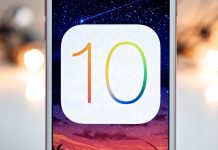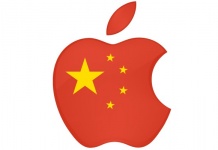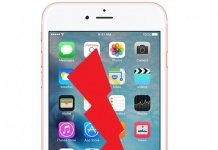
From the Vook blog:
People wax nostalgic about the smell of books, but no one pines for the smell of textbooks. They smelled like glue, they were heavy, and they were—usually—boring. So we were happy to read Apple’s announcement of iBooks 2 and iBooks Author: finally, a kind of book everyone wants to see go digital fast.
It’s a great announcement for digital publishing, for readers, and for platform and tool creators like us. It also raises some interesting complications that we’ve spent months tackling. Here’s how we’re looking at this announcement at Vook.
The Good
eBooks Really Matter
Finally, eBooks are coming of age. This was not an Apple announcement about a new app creation platform. This is about eBooks—and we understand and obsess over eBooks in all of their various incarnations at Vook. Apple really is committing to eBooks. That means great enhanced reading experiences are going to start coming more and more from iBooks instead of the iTunes App store. In turn, eBooks are going to get more attention, more user adoption and more momentum.
The Complicated
More proprietary files
iBooks Author outputs an entirely new file format called “.ibooks.” This is a proprietary file format that only plays in iBooks (edit: it’s not quite epub2 and it’s not quite epub3, nor is it quite XHTML5—plus the widgets are iBooks built-in components rather than open standards JS). As one of our colleagues remarked, “Reminds me of another file format (Amazon’s .mobi, anyone?)”. More file formats—especialy more proprietary file formats (or formats intended for only one device)—means more restrictions for content, more headaches for creators, and less freedom for consumers. The title you produce with iBooks Author aren’t for Amazon, on BN, on Google Books. It’s one channel only.
The Future
More problems = more opportunity
When people write a book, they want that book to be available everywhere. Not just on one platform or device. They want as many people to be able to read their book as possible. Which is why this is announcement has us so happy at Vook. Our platform allows you to build and create files in ePub and Mobi, for Amazon, BN, iBooks, Kobo and others. Vook is not a proprietary format, though we can produce those files. We serve as many of the distributors as possible, bringing your content—and making sure it looks great—to the vast diversity of existing devices and platforms.
The titans of digital book delivery seem to be arming themselves for war. It’s like something out of a textbook on World War II. But Vook lets publishers, creators and content holders work with all of the major players. We’re like the Switzerland of digital publishing. And like the Swiss, our technology is absolutely world class.
(Via The Vook Blog.)


































The Register is also reporting that if you create a book through iBooks author, the EULA states you must sell it through Apple retail channels.
Oh, and so did TeleRead, but I hadn’t read that one yet.
I can see them restricting it to creating ebooks for iPad / iPhone /iOS devices (though I’m not happy about that, it ISN’T “GarageBand for eBooks” like so many pundits predicted.)
But this bit in the EULA about selling (they don’t care about free) the output from iBooks Author ONLY thru the iBookstore… I really hope they drop it.
Or maybe it’s one of those Apple content producer plots to “encourage” people to create free books. Nah…
Keep in mind that you should create the content of whatever you’re writing in an app that can output in a Word format with any app that can export in that format. iBooks Author has no problem ‘inserting’ that into a book. That’s also the norm for creating a book in almost every app around: InDesign to print, Kindle files from Amazon, various files from Smashwords. Apple is being like everyone else. Word text flows in. Specific formatting for a specific media flows out.
For some books, say a novel, that insert does almost everything. Do a few tweaks to the styling and you’re done. And Apple gives you far more control than anyone else. If you writing a gothic novel, use a font that’s a bit spooky. If you’re doing SciFi, use something modern font. Amazon and Nooks don’t give you that sort of control. They force a default font on every book and give readers (not authors) the ability to shift to a dull handful of others. Tasteless.
Of course, for graphics and multi-media intensive books, you’ve only just begun when you have a book with text. You still got to insert all that ‘stuff’ in places where it looks good. But if you want what you do to look good, i.e. be placed right on a page, you’re going to have to do that with each particular platform any way. There’s no way to avoid that. A book laid out for a Kindle Fire isn’t going to work on a Nook either.
So people really should quit complaining that Apple has done something odd or nasty by launching an app that creates files just for its iPad. Apple is just doing what everyone else does and, given the current state of the art in digital book making, it is doing what has to be done.
The upside is that with iBooks Author you really are controlling how the book looks on an iPad. Put that map at the top of page 17 because that’s where it belongs, and that’s where it will stay. To do that for any other device, you have to klutz around with messy, unreliable fixed page formats, including a lot of HTML patching by hand. With iBooks Author, if you drag and drop it there, it will stay there. Easy and predictable.
By the way, this fixed format is probably why Steve Jobs was so firm about iPads staying 10-inch. Shift to a 7-inch screen size, and you either end up with type too small or with formatting gone bonkers.
Also, keep in mind that the precise page layout is only for landscape mode. Landscape is where you create the equivalent of a print book, multiple columns with everything placed just so. Apple spared us the dreadful necessity of having to create a separate fixed layout for portrait mode. That mode is focuses on reading and typically has a single column of scrolling text with smaller images and other graphics placed in a sidebar. It’s a good compromise. In portrait, readability is more important than appearance. That’s probably how you’ll read books that are mostly text.
All in all, I think Apple has done an excellent job for a 1.0 app. They just need to add more features, particularly:
* Widow/orphan control
* Keep with next/previous paragraph
* Endnotes/footnotes
* Many more templates, particular for non-textbooks.
And if some of you want to pout and sulk, that’s OK with me. That just means that I’ll sell a few more of my books.
–Michael W. Perry, author of Untangling Tolkien
I hope Vook paid you for that ad!
A lot of pundits have weighed in against iBooks Author (as they weighed in against the iPod, the iPhone, and the iPad.), especially the EULA. In this case, I believe a lot of it stems from excitement over the potential for ebooks in general. There’s a problem with that sentiment, though. Although people can see the potential for iBooks Author applied beyond the iBooks ecosystem, it was first and foremost designed for the iBooks ecosystem. It shouldn’t surprise folks that it is “limited” only to an Apple platform. Apple’s in business to sell hardware, after all. They want their ebooks on iPads to stand out from those available on the other tablets. Why is this a problem?
This clamor about proprietary formats seems silly when the competition does the same for their color books. Do Nook picture book apps run on Kindles? Do Kindle apps run on iPads? Even the argument that Kindle apps are available on more platforms than iBooks doesn’t change the fact that Kindle eBooks are proprietary, DRM’d products, too.
I think it’s a time to be excited rather than upset. Apple has shot a canon ball across the bow of their competitors. For a time they will have the edge until Amazon and BN respond with their own advancements. In the end, however, we all win no matter what platform we have aligned ourselves with.